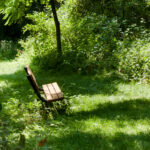Overview
Venango Trail is a forested valley with large, sweeping oaks and a small unnamed tributary. The conservation area is at the headwaters of the Brush Creek watershed, and is home to a variety of wildlife. Also home to several invasive species, ALT relies on the help of dedicated stewards and community members to help keep the multiflora rose and oriental bittersweet at bay along the trail.
Venango Trail is a great spot to plan a moderate hike exploring the valley where you may come across the giant Sycamore and old spring house foundation. An extended trail system is being installed on the property, which will connect to trails in the nearby housing development.
There is a 3 car parking area located on Ridge Drive that intersects with Chilliwack Lane.
Restricted hunting is permitted at this property. We ask that hunters please read our Hunting Policy and apply for a free permit before hunting on any Conservation Area.
Note for Hunters:
Parking is available only on Ridge Drive. We ask that you do not park in the Venango Trail community or ask neighbors to access through their land. Be aware the trail crosses off ALT land on the southern end and runs through private property where hunting is not permitted. In order to maintain this property for hunting access please be respectful of property lines and neighboring landowners. Remember that hunting is not permitted on any Sunday on ALT lands, overnight access is not permitted, and that the trail is still open to other users during the hunting season.
Background
Venango Trail was donated to ALT in 2012 from RT Partners LP, developers of the nearby Venango Trails residential development. Protecting this green space is an environmental benefit to the community, and as new development continues to surround the property it is maintained as a natural buffer.
The history of the property makes it one of a kind. The historic “Venango Trail”, also known as the Venango Path, is a Native American trade route that led from the Forks of the Ohio (Pittsburgh) north to Presque Isle in Erie. In the 1700’s, Washington and company walked this historic path, which proved to be crucial for correspondence and movement during the French and Indian War.




